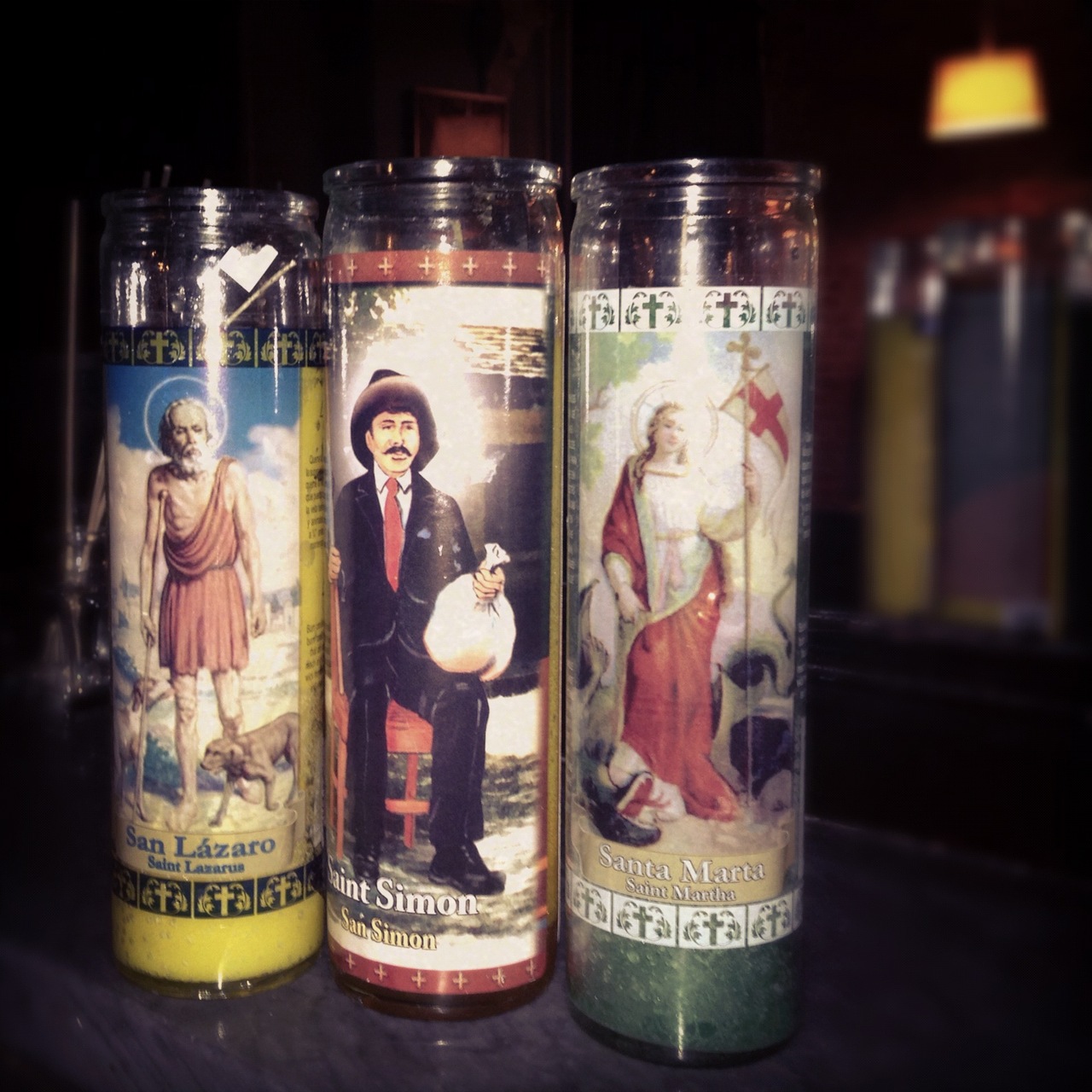Hurricane Sandy Edition: A Look at Some Saints on Candles Bought at a Bed-Stuy Bodega
This post is a little different. There’s no reliquary, crypt or cathedral to speak of, just an odd-looking votive I bought in a Brooklyn bodega while hastily preparing for Hurricane Sandy.
Usually I write about the physical relics of saints legitimized by the Catholic Church. Their bones are the ones kept in far-away cities, in beautiful churches, in beautiful boxes made of gold and wrapped in velvet for safekeeping. But there’s another side of the Church, particularly in developing nations where, despite her best efforts to appear immutable, the Church is developing as well. This is the realm of folk-saints.
The Catholic Church, as most everyone knows, is no stranger to co-opting the rituals and symbols of other religions in the service of conversion. Some of the early saints are nearly perfect replicas of the Roman gods and goddesses they were meant to replace. In the modern developing world, the Church will also morph and legitimize aspects of indigenous gods in an attempt to win potential converts or squelch cults around the gods if they’re too far outside the norms of the Church.
In this context, Our Lady of Guadalupe was legitimized and folded in to the existing image of the Virgin Mary. Saint Simon of Guatemala however is one that the Church has attempted to squelch.
His original Mayan name was Ma’am, meaning “Great-Grandfather”. Legend has it he came to life after the people from a village plagued by witchcraft carved him out of sacred wood and prayed for relief. They quickly realized Ma’am was a shape-shifter and capable of both good and evil, so they tried to restrain him with string but lost control. He successfully killed all the witches in the village but also occasionally killed young men and women after changing into an attractive member of the opposite sex. So the locals had his legs broken and his head put on backwards. This rendered him unable to do evil but still able to do good.
When Spanish missionaries saw Ma’am’s icons depicting a man tied with string to the heavenly crossroads, they conflated it with a crucifixion other than the crucifixion of Christ and tried to fold him into church doctrine. The priests sympathetic to the Mayans likened Ma’am to Simon-Peter, the crucified apostle, while less sympathetic priests likened him to Judas Iscariot, who hung himself from a tree. Thus spawning the names St. Simon, St. Simon-Judas, and the portmanteau Maximon.
There are still shrines to St. Simon in Guatemala, despite being discouraged by the Church. He’s venerated for good luck, wealth, and male fertility. Gifts to him include cash, cigars, liquor, Coca-Cola, and sausages. Believers drape him with handkerchiefs and ties they wear
While the particulars of his cult may seem odd within the arena of modern Catholicism, Joanna Ebenstein offered more context and insight in a talk about the similarly shunned and maligned Santa Muerte. On the subject of the Mexican folk-saint’s venerators she said:
“[She’s] worshipped by disenfranchised members of society such as criminals, prostitutes, transvestites, the very poor, and other people for whom conventional Catholicism has not provided a better or safer life.”
And this can be said of many fringe folk-saints. Saint Simon included. Right now though, he’s sitting on the mantle with his mainstream brethren (and biblical sister and brother), Sts. Lazarus and Martha, waiting to be called upon while I ride the storm out.

